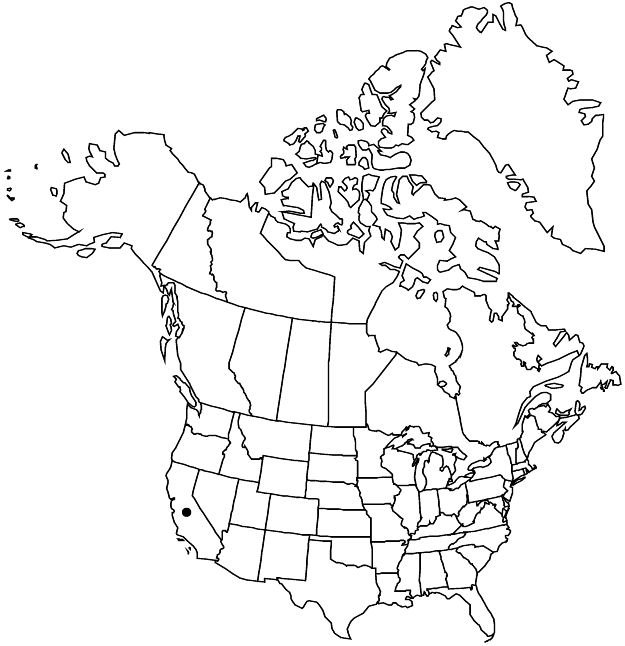Horkelia parryi
Bull. Calif. Acad. Sci. 2: 416. 1887.
Plants forming open mats. Stems ascending to erect, 1–3 (–3.5) dm. Basal leaves 4–10 (–12) × 1–2 cm; leaflets 3–6 (or 7) per side, narrowly obovate, 5–12 (–15) × 4–8 (–10) mm, 1/2–3/4 as wide as long, divided ± 1/4 to midrib into 5–10 oblong to broadly obovate teeth, sparsely pilose especially on midveins and margins. Cauline leaves 1–4. Pedicels (3–) 5–15 mm. Flowers 15 mm diam.; epicalyx bractlets linear-lanceolate to narrowly elliptic, 2–5 × 0.5–1.5 mm, ± 2/3 length of sepals; hypanthium 0.6–1 × 2.5–4 mm, less than 1/3 as deep as wide; sepals ± spreading to reflexed, lanceolate to narrowly elliptic, 3.5–6 mm; petals elliptic to obovate, 4–7 × 3 mm, apex obtuse to rounded to truncate or slightly emarginate; filaments 1–3 × 0.6–1.3 mm, anthers 0.6–1 mm; carpels (17–) 20–50; styles 1.5–2.5 mm. Achenes grayish, 1.3–1.5 mm, finely reticulate. 2n = 28.
Phenology: Flowering late spring–early summer.
Habitat: Chaparral, pine-oak woodlands, primarily on Ione Formation, rarely on schist or limestone
Elevation: 80–900 m
Discussion
Of conservation concern.
Horkelia parryi is known from the foothills of the western Sierra Nevada in Amador, Calaveras, and El Dorado counties, and is disjunct in Mariposa County.
Selected References
None.
Lower Taxa
"thin" is not a number.No values specified."dm" is not declared as a valid unit of measurement for this property."dm" is not declared as a valid unit of measurement for this property."dm" is not declared as a valid unit of measurement for this property.
